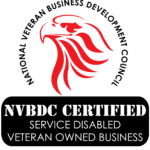When the COVID-19 pandemic hit the United States in March 2020, life and work significantly changed. And though we’ve largely returned to normal as vaccines and treatments have become available since the initial COVID wave, some of the practices that were adopted during the worst of the pandemic remain today. Case in point: virtual meetings.
Unlike many professions where workers could do their jobs just as effectively from home as they could from the office, you can’t exactly build a building from home. And while construction was largely considered “essential work,” many firms still moved toward holding remote – rather than in-person – meetings to help eliminate any crowds or gatherings in trailers and meeting rooms to the best of their ability. To an extent, these remote meetings have lived on, but it should go without saying that there’s a right way and a wrong way to run a virtual meeting. In this post, we’ll cover some of the basics of how to get the most out of your remote meetings:
Best Practices for Remote Meetings
The first thing any firm should do is set some ground rules for virtual meetings. For instance:
- Encourage attendees to turn their cameras on to help facilitate face-to-face contact.
- Set an agenda to keep the meeting organized and on track.
- Select someone to lead the meeting.
- Make sure to include everyone in the meeting and ensure there’s an opportunity for everyone to speak.
- Make sure to leave some time for any questions at the end of the meeting.
We’d also suggest spending a few minutes on small talk at the beginning of the meeting before you get onto the agenda so that attendees can get to know other people on the call and settle in a bit. At the end of the meeting, it’s always good practice to recap any key decisions that were reached and any next steps that need to be taken (if any).
What Meetings are Appropriate for Virtual?
Not all meetings should be held virtually. For instance, owner’s meetings and other meetings of high importance are likely best to be held in person.
However, recurring touch bases, meetings with subcontractors and scheduling meetings that are more routine and less formal are ideal candidates for virtual meetings. Think of it like this: Any meeting that could be a phone call would be ideal over Zoom or Microsoft Teams.
How to Get Worker Buy-In
We understand how workers may have been more receptive to virtual meetings when it was deemed necessary per public health guidelines. But now that life has returned to normal, firms may be getting more resistance when it comes to virtual meetings. While some meetings are absolutely best held in person, there’s a reason why remote meetings haven’t been completely abandoned. It’s because they simply make sense in certain situations.
So how can you communicate the value of remote meetings to workers that are increasingly scoffing at meeting over a computer screen? It’s all about focusing on the benefits of this format with your team. These benefits include:
- Increased flexibility, as attendees don’t need to be in the same room at the same time. Virtual meetings respect people’s personal lives and other work commitments. They can also save money.
- It’s easy to share documents and designs via screen share rather than having a group gather around printed documents or a whiteboard.
- Nearly 70 percent of workers say that they find virtual meetings less stressful than in-person meetings.
Contact Ace Consulting Today
For more information on how to facilitate meetings in remote environments and how to get worker buy-in, contact Ace Consulting today.



